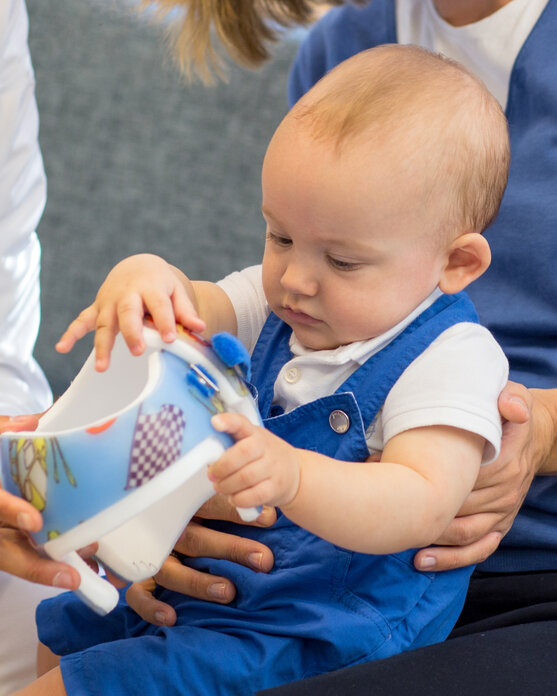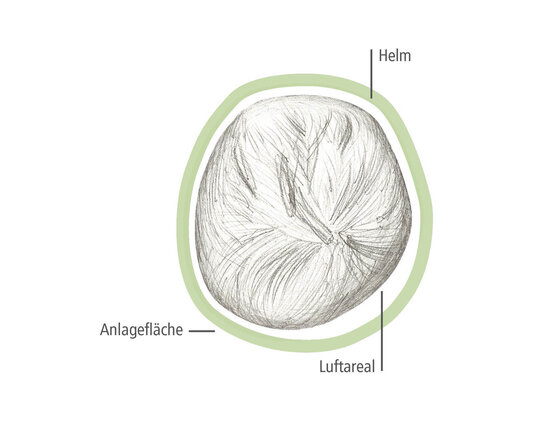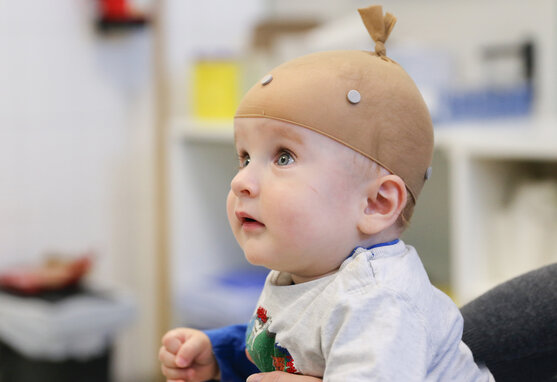A cranial helmet is an orthosis that gently remolds the head into the most anatomical and aesthetic shape possible.
Get to know us and learn more about our core competencies!
Make an appointment over the phone or send us a message!
What can I do?
My baby’s head is deformed
It is quite common for babies to develop a flattened head. Sometimes the back of the head is flattened (brachycephalus) and other times, the deformity is on the sides of the head (plagiocephalus). In some infants, the head deforms in the womb or during birth, and in others, skull asymmetries occur during the first few months of life.
Usually, doctors, therapists or the parents are first to notice a flat or deformed head on the child. A head deformation is usually relatively easy to detect. If you look at the baby’s head from a bird’s eye view, you can see quite clearly whether the back of the head is flattened on one side or whether one ear is closer to the nose than the other. If this is the case, action should be taken as quickly as possible, as deformity of the head can lead not only to cosmetic problems, but also to medical problems. For example, the deformation of the skull may cause the jaw to shift.
In addition to the positioning therapy offered by physiotherapists and osteopaths, a cranial helmet can effectively correct the deformation of the child’s head.


Cranial helmet therapy
Why a cranial helmet makes sense
If your child has a skull deformation and manual therapies have not been successful, a cranial helmet should be considered.
Cranial helmets take advantage of the natural and rapid growth of the head during the period of infancy. The orthosis gently guides the growth of the head into the most anatomical and aesthetic shape possible.
Growth-guiding therapy should be used between the 5th and 9th month of life. During this time, the cartilage holding the cranial bones has not yet hardened and the bones are relatively moveable. This is why guiding the growth of the cranial bones is possible in the first year of life.
How does a cranial helmet work?
The custom-made helmet has built-in spaces that the head can grow into. Contact surfaces are created on the sections of the skull that project outwards. There should be no pressure on the head.
The pediatrician will instruct you how long the helmet should be worn each day. Generally, helmets are worn 23 hours a day. When treatment is first started, the helmet should be removed at regular intervals to inspect the head for possible pressure points.

How is a helmet created?
First, a non-contact scan is made of the child’s head. This allows the specific deformity to be determined. The scan itself is harmless to the health of infants.
Once this process is complete, we produce the individual helmet. In the course of one or more trial appointments, adjustments are made to the helmet until an optimal fit is achieved.




Patient stories
Four years after helmet therapy
Anton was born with a deformed head. Today, four years later, his mother talks about her experiences with the head orthosis and explains why the whole family went around town with a helmet at some point...

